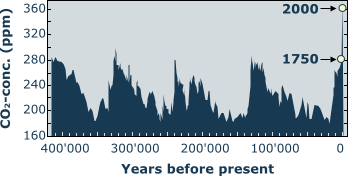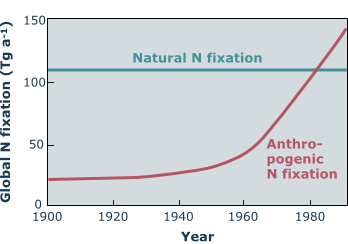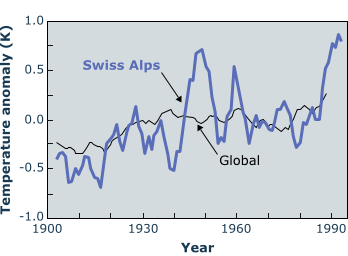Atmospheric changes: overview
The enrichment of the atmosphere with CO2 and soluble N-compounds is a given, unquestioned part of global change.
- The atmospheric CO2 concentration has increased by c. 40 % over the past 200 years from 280 to 390 ppm. Most of this increase has occurred during the last 50 years (Fig. 1).
- Since the early 1980s, anthropogenic nitrogen "fixation", i.e. the production of gaseous soluble N-compounds (NOx, NH3) has exceeded the global natural N-fixation. In some areas of the globe ecosystem N-input has increased 10-20 fold during the past 100 years (Fig. 2).
- To a large extent, the mean global atmospheric warming of 0.6 K observed during the last century has been driven by the anthropogenic release of greenhouse gases such as CO2. Warming has been c. 1 K in the European Alps and several K in some subarctic mountains. These thermal changes affect other components of the climate system as well (precipitation, cloudiness, wind) (Fig. 3).
1 -
The 420'000 year course of atmospheric
CO2
concentration as reconstructed from antarctic ice cores. Note the 180-290 ppm
range from which current trends significantly deviate
(Petit et al. 1999).
2 -
Anthropogenic vs. natural N-fixation
(Vitousek 1994).
3 -
Climate warming: a comparison of global trends in mean surface temperature
anomalies with those averaged for eight high elevation sites in the Alps
(smoothed out with a 5-year filter)
(Beniston et al. 1997).



